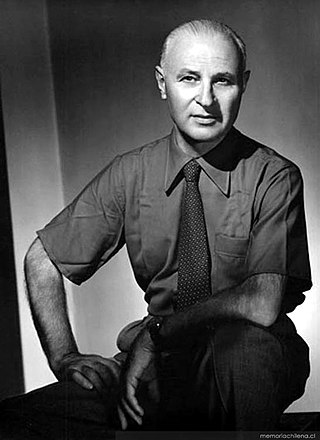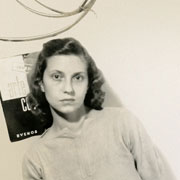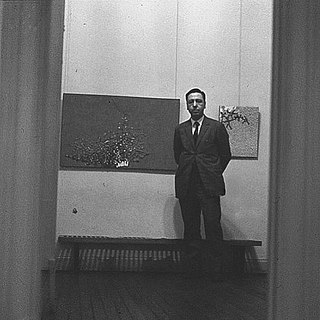
Buenos Aires, officially the Autonomous City of Buenos Aires, is the capital and primate city of Argentina. The city is located on the western shore of the Río de la Plata, on South America's southeastern coast. "Buenos aires" is Spanish for "fair winds" or "good airs". Buenos Aires is classified as an Alpha global city, according to the Globalization and World Cities Research Network (GaWC) 2020 ranking.

The culture of Argentina is as varied as the country geography and is composed of a mix of ethnic groups. Modern Argentine culture has been influenced largely by the Spanish colonial period and the 19th/20th century European immigration, and also by Amerindian culture, particularly in the fields of music and art. Buenos Aires, its cultural capital, is largely characterized by both the prevalence of people of Southern European descent, and of European styles in architecture. Museums, cinemas, and galleries are abundant in all of the large urban centers, as well as traditional establishments such as literary bars, or bars offering live music of a variety of music genres.

Alfredo Genovese is a fileteador and visual artist. He is also recognized as researcher and teacher, author of several books about fileteado porteño, a typical popular painting from Buenos Aires.

Emilio Pettoruti (1892–1971) was an Argentine painter, who caused a scandal with his avant-garde cubist exhibition in 1924 in Buenos Aires. At the beginning of the twentieth century, Buenos Aires was a city full of artistic development. Pettoruti's career was thriving during the 1920s when "Argentina witnessed a decade of dynamic artistic activity; it was an era of euphoria, a time when the definition of modernity was developed." While Pettoruti was influenced by Cubism, Futurism, Constructivism, and Abstraction, he did not claim to paint in any of those styles in particular. Exhibiting all over Europe and Argentina, Emilio Pettoruti is remembered as one of the most influential artists in Argentina in the 20th century for his unique style and vision.

Gyula Kosice, born as Ferdinand Fallik, was a Czechoslovakian-born and naturalized Argentine sculptor, plastic artist, theorist, and poet. He played a pivotal role in defining the concrete and non-figurative art movements in Argentina and was one of the precursors of kinetic, luminal, and hyrdokinetic avant-garde art. His work was revolutionary in that it used, for the first time in international art scene, water and neon gas as part of the artwork.

Ricardo Ernesto Montes i Bradley, poet, essayist, art historian, and literary critic and diplomat born on June 9, 1905, in Rosario, Argentina. He was Honorary Consul of México in Rosario, professor of Fine Arts, publisher, columnist and contributor in newspapers and literary magazines in Latin America. R-E Montes i Bradley held Doctorates in the Law, Diplomacy, History and International Law. He was an active member of the International Institute of Ibero-American Literature and the International Association of Critics; Correspondent Member of the National Academy of Arts and Literature of Cuba and of the National Academy of History and Geography of Mexico; Honorary Member of the Mexican Academy of Genealogy and Heraldry ; member of the Sociedad Argentina de Escritores (SADE); a member of the Círculo de la Prensa and the Colegio de Abogados de la Ciudad de Rosario; co-founded the Escuela de Bellas Artes de Rosario; member of the Asociación de Críticos de México. As publisher, he was responsible for the Boletín de Cultura Intelectual, which he also directed; the art magazines Revista Paraná and Cuadernos del Litoral were also the result of his commitment to journalism in the arts. The last two publications were dedicated to promote the works of local artist, writers, poets in the region known as Paraná, Rosario de Santa Fe and vicinity.
Nicole Nau is a German dancer of Tango Argentino and Argentine folklore living in Argentina and Germany.

Appetite was a gallery and artist-run space, founded by Daniela Luna, in the neighborhood of San Telmo, Buenos Aires, Argentina. Its mission was to showcase and promote new artists. It sometimes courted controversy, before closing in mid-2011.

Lidia "Lidy" Elena Prati (1921–2008) was an Argentine painter who was known for her abstract, geometric paintings. Her artwork called into question representational art and was influential in defining the concrete art movement in Latin America. Prati contributed to the publication of Arturo magazine and during the 1940s, was one of the founding members of the Asociación Arte Concreto-Invención (AACI) art movement along with Enio Iommi and Tomás Maldonado. While she is primarily known for her concrete art paintings, Prati also worked in graphic and layout design and worked with textiles and jewelry.

Sergio Castiglione is an Argentine photographer. He has exhibited his work in Argentina as well as abroad. He mainly focuses on urban exploration, travel, and architectural photography.

Delia Cancela is an Argentine pop artist and fashion designer. She has lived in Argentina, New York, London and Paris, and exhibited internationally. Retrospective exhibitions of her work and her collaborations with Pablo Mesejean include Delia Cancela 2000-Retrospectiva (2000), Pablo & Delia, The London Years 1970-1975 (2001), and Delia Cancela: una artista en la moda (2013).

Vera Martha Winitzky de Spinadel was an Argentine mathematician. She was the first woman to gain a PhD in mathematics at the University of Buenos Aires, Argentina, in 1958. Between 2010 and 2017, she was full Emeritus Professor in the Faculty of Architecture, Design and Urban Planning of the University of Buenos Aires. In 1995, she was named Director of the Centre of Mathematics and Design. In April 2005 she inaugurated the Laboratory of Mathematics & Design, University Campus in Buenos Aires. From 1998 to her death she was the President of the International Mathematics and Design Association, which organizes international congresses every 3 years and publishes a Journal of Mathematics & Design. She was the author of more than 10 books and published more than 100 research papers. Spinadel was a leader in the field of metallic mean and in the development of the classical Golden Ratio and got wide international recognition.

Roberto Lucio Pignataro (1928–2008) was an Argentine Informalist artist. He was known for the innovative composition technics he developed and diversity of styles he applied to his artwork.

Dalila Puzzovio is an Argentine visual artist and fashion designer active during the 1960s. Puzzovio works in the art forms of pop, happening, and conceptual art. Her artistic creativity is credited by Graciela Melgarejo as having paved the way for subsequent Argentine artists and greatly influenced the work they produced.
Mari Nalte Orensanz is an Argentine artist. Her artwork examines the integration of thought and matter as a methodology to obtain a social consciousness. Orensanz's experience of Argentina's "Dirty War" has influenced her artwork and translated itself into the work Pensar es un Hecho Revolucionario. Located in the Parque de la Memoria in Bueno Aires, it is attributed as a monument for the victims of state terrorism.
Liliana Maresca was an Argentine artist. Her works cover a variety of styles including sculpture, painting, graphic montages art objects and installations. She was a prominent artist in the period following the dictatorship of the National Reorganization Process. She was a key figure who participated in the artistic scene since the early 80's, starring the enthusiastic young bohemian that detonated Buenos Aires from the early years of democracy rapidly becoming an inflection figure. Her works included objects, installations, performances, interventions in public and semipublic places, and the photographic performances. Maresca died of AIDS in 1994, just a few days after the opening of her retrospective at the Centro Cultural Recoleta in Buenos Aires.

Mónica Weiss is an Argentine illustrator, artist, writer and architect. She has illustrated more than 140 books and has actively worked for the rights of illustrators and to show the importance of illustration in Argentina.

Mercedes Santamarina Gastañaga was an Argentine art collector and patron. Interested in art from an early age, Santamarina amassed a large collection of pieces over the course of her life. In her last few years she donated much of her collection to the Museo Nacional de Bellas Artes in Buenos Aires and the Museo Municipal de Bellas Artes Tandil in Tandil.
Laura Messing is an Argentine visual artist who lives and works in Buenos Aires.
Fernanda Lavera is a neo-expressionist artist from Buenos Aires, Argentina. Lavera's artistic style was influenced by the street art scene and the Buenos Aires art community. Her art came to an international audience after being spotted by music producer and art collector Clive Davis, who came across Lavera's art during an exhibition that took place at the Palacio Duhau in Buenos Aires.
















